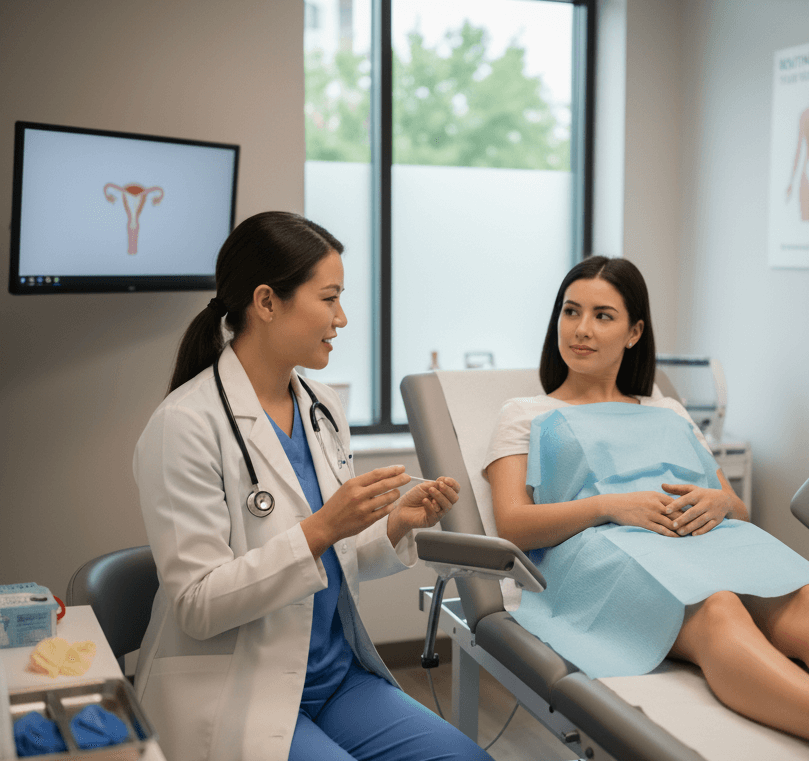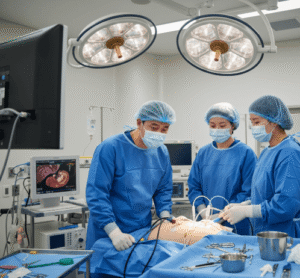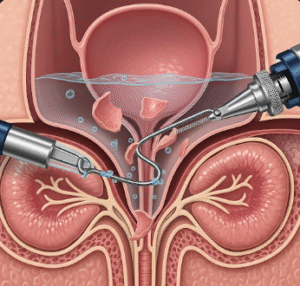What it is
A routine pelvic exam is a standard medical examination of the female reproductive organs, including the vagina, cervix, uterus, fallopian tubes, and ovaries. It is performed by a gynecologist or women’s health provider to check for abnormalities, infections, and early signs of diseases such as cervical cancer.
In Korea, routine pelvic exams are part of comprehensive women’s health care and are often combined with Pap smears, HPV testing, and ultrasound scans. They are conducted in gynecology clinics, women’s hospitals, and preventive health centers, where advanced diagnostic technology ensures accuracy and comfort.
➡️ Key facts about pelvic exams:
- Usually recommended once a year or as advised by a doctor
- Helps detect infections, cancers, and reproductive health issues early
- Can be part of a general health check-up or fertility evaluation
Why it’s done
Routine pelvic exams are essential for early detection, prevention, and reassurance.
✔️ Medical reasons include:
- Cervical cancer screening with Pap smear and HPV test
- Checking for infections such as yeast infections, STIs, or bacterial vaginosis
- Evaluating pelvic pain, irregular bleeding, or abnormal discharge
- Monitoring reproductive health and fertility-related conditions
- Detecting uterine fibroids, ovarian cysts, or endometriosis
✔️ Benefits of routine exams:
- Early diagnosis of serious conditions like cancer or precancerous changes
- Helps track menstrual or hormonal health
- Provides reassurance for women with no symptoms
- Improves overall reproductive and sexual health outcomes
Alternatives
Although pelvic exams are standard, there are some alternatives or complementary approaches.
🔹 Self-monitoring:
- Women can monitor for abnormal bleeding, pain, or discharge, but self-checks cannot replace medical exams.
🔹 Home HPV test kits:
- Available in some countries, but less accurate than in-clinic Pap/HPV tests.
🔹 Imaging tests only (ultrasound, MRI):
- Helpful for structural abnormalities but does not replace direct examination or cervical screening.
➡️ Note: Routine pelvic exams remain the most reliable way to evaluate gynecologic health.
Preparation
Preparation helps ensure comfort and accurate results.
➡️ Medical preparation:
- Schedule exam mid-cycle (not during menstruation) for best results
- Avoid douching, vaginal creams, or intercourse for 24–48 hours before exam
➡️ Personal preparation:
- Wearing comfortable clothing for easy access
- Preparing a list of symptoms, menstrual history, and questions for the doctor
- Bringing past reports if monitoring a condition
➡️ Mental preparation:
- Understanding the procedure reduces anxiety
- Relaxation techniques (deep breathing) can improve comfort
- Korean clinics often provide a respectful, private environment to ease stress
How it’s done
Routine pelvic exams in Korea are conducted with care, discretion, and advanced tools.
✔️ Step 1 – Medical history review
- Doctor asks about menstrual cycle, sexual activity, symptoms, and medical background
✔️ Step 2 – External examination
- Visual inspection of vulva for signs of infection, irritation, or lesions
✔️ Step 3 – Speculum exam
- Speculum gently inserted to open vaginal walls
- Cervix examined visually for abnormalities
- Pap smear or HPV sample collected if indicated
✔️ Step 4 – Bimanual exam
- Doctor uses gloved fingers inside the vagina and the other hand on the abdomen
- Uterus, ovaries, and pelvic structures palpated for abnormalities
✔️ Step 5 – Optional ultrasound
- Vaginal or abdominal ultrasound may be added for more detailed evaluation
✔️ Duration:
- Entire exam takes 10–20 minutes
- Quick, safe, and minimally uncomfortable with skilled doctors
Recovery
Recovery is immediate, though some women may experience mild symptoms.
➡️ Immediate recovery:
- Slight spotting possible after Pap smear
- Mild cramping or pressure sensation for a few hours
➡️ Physical recovery:
- Resume normal activities right away
- No restrictions after exam unless biopsy performed
➡️ Emotional recovery:
- Some women feel anxious or embarrassed before exams, but reassurance follows once results are normal
- Counseling and respectful care provided in Korean clinics help ease emotional concerns
➡️ Key recommendations:
- Schedule follow-up if abnormal results found
- Keep track of menstrual cycles and any new symptoms
- Combine pelvic exams with breast exams and general health screenings for comprehensive women’s care
Treatment option in Korea
Korea offers high-quality, patient-centered pelvic exams in both public and private healthcare settings.
✔️ Hospital/clinic facilities:
- Equipped with modern diagnostic technology, including digital speculums and high-resolution ultrasound
- Comfortable, private examination rooms ensuring patient dignity
- Integration with national cancer screening programs
✔️ Medical expertise:
- Skilled gynecologists with experience in preventive and diagnostic care
- Female doctors available in many clinics for patient comfort
- Multidisciplinary support (oncologists, fertility specialists, dermatologists) if abnormalities detected
✔️ Post-exam care:
- Rapid lab processing of Pap and HPV test results
- Immediate referral for colposcopy, biopsy, or treatment if abnormal findings present
- Lifestyle counseling and follow-up scheduling included
✔️ Cultural aspect:
- Korean clinics emphasize privacy, respect, and patient comfort
- Women often combine pelvic exams with annual health check-ups
- Preventive care awareness has grown, making routine exams common and socially accepted













